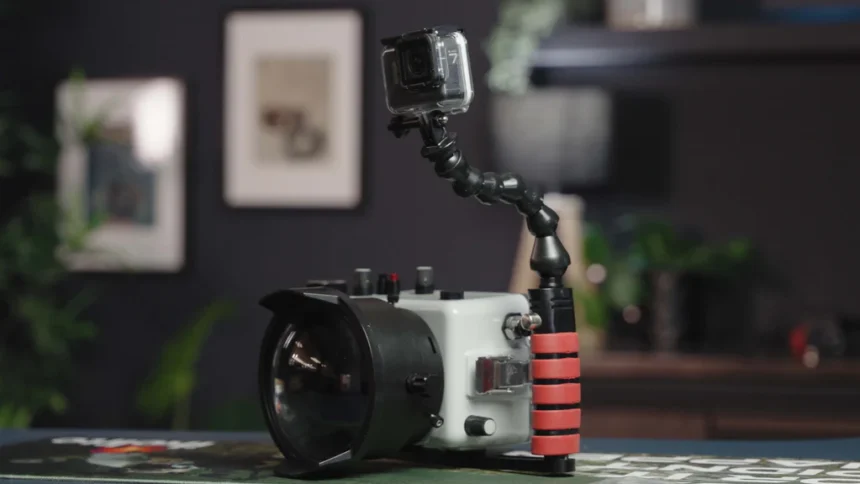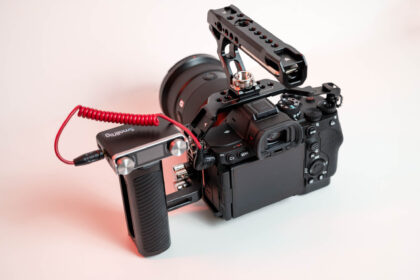Underwater housing and mounts are essential tools for anyone planning to shoot videos or photos beneath the surface. Whether you’re a beginner photographer, a travel vlogger looking to elevate your adventure videos, or a professional filmmaker capturing marine life, having the right underwater gear ensures safety, stability, and crystal-clear images. This guide covers what underwater housing and mounts are, how to choose them, price expectations, the best options available, and everything you should know before diving in.
Why Use Underwater Housing & Mounts?
Underwater housing and mounts protect your camera from water pressure, moisture, dust, and physical damage. Without the right setup, even a small amount of water can permanently destroy your camera. These tools not only safeguard your equipment but also enhance shooting flexibility by allowing stable footage underwater.
Creators use underwater housing for activities such as snorkeling, scuba diving, surfing, freediving, pool photography, and documentary filmmaking. Mounts add stability and help maintain proper framing when movement and buoyancy make handheld shooting difficult.
Underwater equipment differs greatly from standard camera gear because it must withstand pressure, allow full control access through sealed buttons, and maintain optical quality through domes or flat ports.
Understanding Underwater Housing Basics
What Is Underwater Housing?
Underwater housing is a protective case designed to seal your camera from water intrusion. These housings are typically made from polycarbonate, aluminum, or a combination of both. Key features include O-ring seals, locking mechanisms, pressure ratings, and either flat or dome ports depending on your lens type.
Good underwater housing provides full access to your camera’s controls, ensuring you can adjust settings like aperture, ISO, and shutter speed while diving.
What Are Underwater Mounts?
Underwater mounts allow you to stabilize your camera or attach it to various surfaces or gear. Common types include:
- Handheld mounts
- Helmet mounts
- Chest mounts
- Tray and arm systems
- Suction mounts for boats and boards
- Grip handles or dual-handle stabilizers
These mounts offer better stability, reduce shake, and help capture smooth underwater shots.
Important Specifications to Check
Before purchasing underwater housing and mounts, pay attention to:
- Depth rating (measured in meters or feet)
- Compatibility with your camera model
- Housing material strength
- Seal quality (O-rings and double-lock systems)
- Port options for different lenses
- Mounting adapters or expansion ports
These specifications determine how safe and reliable your gear will be underwater.
Choosing the Right Underwater Housing & Mounts
Match the Gear to Your Camera and Purpose
Different camera types require different underwater solutions. DSLR and mirrorless users need larger housings with interchangeable ports, while action camera users may prefer compact, lightweight cases. Your shooting style also matters: vloggers may prefer handheld stabilizing rigs, whereas filmmakers may require dual-arm tray systems.
Important Decision Factors
Budget, environment, and usage frequency all play major roles.
- Budget: Many creators search for “underwater housing & mounts price” to get an idea of the cost. Entry-level options start low, but professional housings can be significantly more expensive.
- Water Type: Saltwater can corrode metal housings faster than freshwater, so material selection matters.
- Accessories: Lights, dome ports, buoyancy arms, and filters can influence your setup.
Top Features to Look For
Some features that drastically improve performance include:
- Full manual camera control access
- High-quality dome or port options
- Durable materials and corrosion resistance
- Buoyancy adjustment
- Universal mounting threads
These help ensure your gear performs reliably in challenging underwater conditions.
Price Range and What It Means
Understanding underwater housing & mounts price ranges helps you choose the right gear without overspending.
- Entry-Level (Affordable Options): Great for beginners, casual vloggers, and shallow-water shooting.
- Mid-Range: More durable materials, deeper depth ratings, better lens ports, and improved ergonomics.
- Professional Level: Built for filmmakers and deep divers, offering top-tier sealing, compatibility, and reliability.
Each tier provides different benefits depending on who you are and what you shoot.
Best Underwater Housing & Mounts Options
Creators often search for “best underwater housing & mounts” when preparing for a new dive project. While the best choice depends on your camera type and budget, the general recommendations include compact housings for action cameras, versatile mirrorless housings with interchangeable ports, and robust aluminum housings for pro filmmakers.
Here’s a quick comparison overview:
| Category | Ideal For | Key Highlights |
|---|---|---|
| Entry-Level Housing | Beginners | Lightweight, budget-friendly, 20–40m depth |
| Mid-Range Housing | Travel vloggers | Balanced durability and controls |
| Professional Housing | Filmmakers | Deep depth rating, premium sealing, modular |
| Tray & Arm Mounts | Stability seekers | Smooth footage, great for wide shots |
| Compact Mounts | Action cameras | Easy to use, minimal drag underwater |
To explore high-quality setups for your next dive, visit CameraHolder.com.
Buying and Safety Tips Before You Dive
Before you take your gear underwater, follow these safety steps:
- Test the housing without the camera first
- Always inspect and lubricate O-rings
- Double-check all locks and seals
- Use silica gel packets to reduce internal fogging
- Avoid changing lenses near water
- Rinse your gear thoroughly after saltwater use
- Let everything dry completely before storing
- Keep mounts tight and secure before entering the water
These precautions prevent leaks, corrosion, and unexpected malfunctions underwater.
Frequently Asked Questions
How deep can underwater housing go?
Most entry-level housings support 20–40m depths, while professional housings can reach 60–100m or more depending on build and certification.
Can I use regular camera gear underwater?
No. Without dedicated underwater housing, even brief exposure to water can destroy your camera.
How much do underwater mounts cost?
The cost varies based on materials and type. Basic mounts are budget-friendly, while advanced tray and arm systems cost more due to added stabilization features.
Are underwater mounts universal?
Most mounts follow standard tripod thread sizes, but always check compatibility with your housing and accessories.
Do I need special care after using gear in saltwater?
Yes. Saltwater accelerates corrosion. Always rinse your equipment with fresh water immediately after use and allow it to dry completely.




